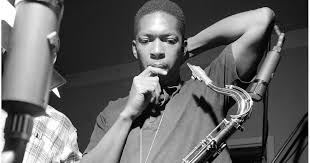Mel needed music in order for his particular magic to emerge. His technical skills were nothing to write home about and you certainly wouldn't want to listen to him playing a solo snare drum etude or rudiments. His chops were internal and they were considerable once the music started.
I spoke earlier of flashes of "Melness" and I have had them from time to time. I subbed with a great big band recently and I had the flash. As I played a Bill Holman chart. I began to hear more and more of his voice coming through me. I studied with him, but I never, except for these rare occasions, sounded like him. What I did have in me was the musical knowledge that he imparted and the many hours I spent listening to him.
Other drummers have reported these flashes as well especially when playing his drums as they subbed for him. I know that I did. He was one of those rare people whose sound was in his instrument no matter who was playing and believe me, it was a broad group of players. Many people have tried to copy him and failed. You simply cannot copy response and inspiration.
I have always had a problem writing about him because he was so much more than the drums. I often got the sense that he was hearing music at a higher level. When I think about it that's what "Melness" is all about.
The Groove Continues




 RSS Feed
RSS Feed
